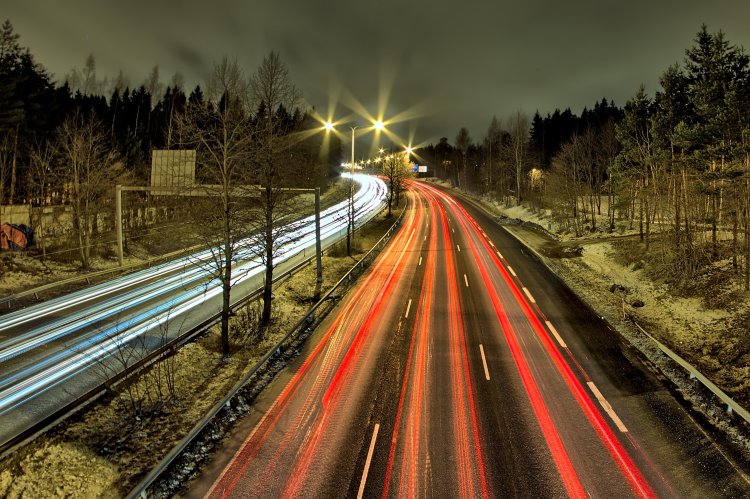A rough road, a rough road, a rough road, a hole: a children's game and adult problems: the Federal Road Agency (RosAvtoDor) spends over 300 billion rubles on road maintenance and rehabilitation: 302 billion in 2019, 325 billion in 2020, and, according to plan, 344 billion in 2021. For comparison: the civil programs budget of the Roscosmos State Corporation for Space Activities in 2020 was 176 billion rubles, net of defense contracts.
On average, car ownership in Russia remains at the “one car per family” level. In absolute terms, the number of cars on roads has grown: there were 249 cars per 1,000 people in 2010, 285 in 2016, the latest statistics showing 319 cars per 1,000 people.
The increase in traffic affects the road wear and tear level to a degree, e.g. ruts develop faster on highways and urban roads – applicable standards allow 20 t0 35 mm “tracks” caused by wheels, depending on the class of the road. When seasons change, new potholes show the road builders where they were not sufficiently responsible with their pavement work: on a spring day, the snow on roads melts from the sun and wheels, water gets into cracks and pores in the asphalt, then gets frozen at night and bursts the asphalt since ice is 11% larger than water. Road sections with no drainage, such as a sand cushion, under the asphalt usually suffer the most: the water that got into the “body” of the road has no place to go, so the damage from freezing is greater.
New technologies and products may offer an alternative to asphalt.
Alternative pavements
According to companies that suggest using fiber reinforced concrete for pavement, it is twice the price of asphalt, but repairs would only be needed in 10 years, while asphalt has to be repaired after 3 years. That would allow laying 30 m sections without contraction joints. Specialists say that roads built using steel fibers can support vehicles weighing over 100 tons, with much lower labor costs.
Steel fibers are an alternative to the classical concrete reinforcement. Instead of wire mesh, concrete is reinforced with steel wire with hook ends. Fiber is lighter than reinforcement steel, and the wire is distributed evenly over the entire pavement areas. This technology was first used in the US in 1970; later, a concrete highway was built in Japan. In addition, fiber reinforced concrete is used in runways, to strengthen mountain slopes, and cast slabs, floor and foundations.
Scientists from Tyumen suggested using diatomite to build roads in 2017. Diatomite is a naturally occurring clay-like substance. It is light, a good moisture adsorbent and turns into granules when heated up to 700 degrees, the granules being suggested for use in construction.
Diatomite pavement withstands frost and moisture and does not deteriorate when exposed to temperature differences. Normally, diatomite occurs on the surface, and is plentiful across the world, which facilitates mining and development of the resource. There are several experimental road sections built in Russia, which are being tested for reliability.
Recycled path
The global trend of reusing plastic has come to the road sector. Companies suggest using recycled waste to build modular roads, with prefabricated blocks laid upon compacted sand.
Hollow modules are being suggested, in which utility mains, sensors and road heating systems could be installed. The energy is to come from vibration caused by moving vehicles. The new technology could be a partial solution to the plastic reuse problem: if the technology is adopted successfully, a lot of plastic will be required.
Designers mention quick installation, easy maintenance, efficiency and durability as advantages. There are still questions regarding the technology though: how the slabs would be fastened to the ground, how to deal with horizontal displacement of the blocks due to hard braking, and what kind of load the recycled plastic would be able to support. Experimental road sections should give answers to these questions.
Repairing cracks
Without milling and asphalt blots: Dutch scientists offered a technology that would enable asphalt to practically self-heal. As the pavement is laid, power conducting fibers are mixed into the asphalt. Electric current is put through near a developing crack, heating the fibers which heat up the pavement enough to melt pavement material, which fills the cracks.
Switzerland developed a similar technology. Iron oxide nanoparticles are introduced during road repairs and subjected to an alternating magnetic field. The pavement softens and fills the crack.
Pleasant additions
Black “bold patches” in Russian cities: even when it’s cold and snowing, the ground is warm above heating mains. The same principle is used in Japan to build snow-melting roads. The coldest regions of the island state use hot water pipes.
Moreover, some projects suggest using roads as a power source – by paving road sections with sun panels. In addition, a Pakistani scientist has created a wind pipe, spun by airflows from traffic, the spinning movement generating power. There is an in-built battery in the system, enough to power two lamps.
Photo: valokuva24 / ru.123rf.com
Based on best-stroy.ru, proteh.org, ecologynow.ru






















